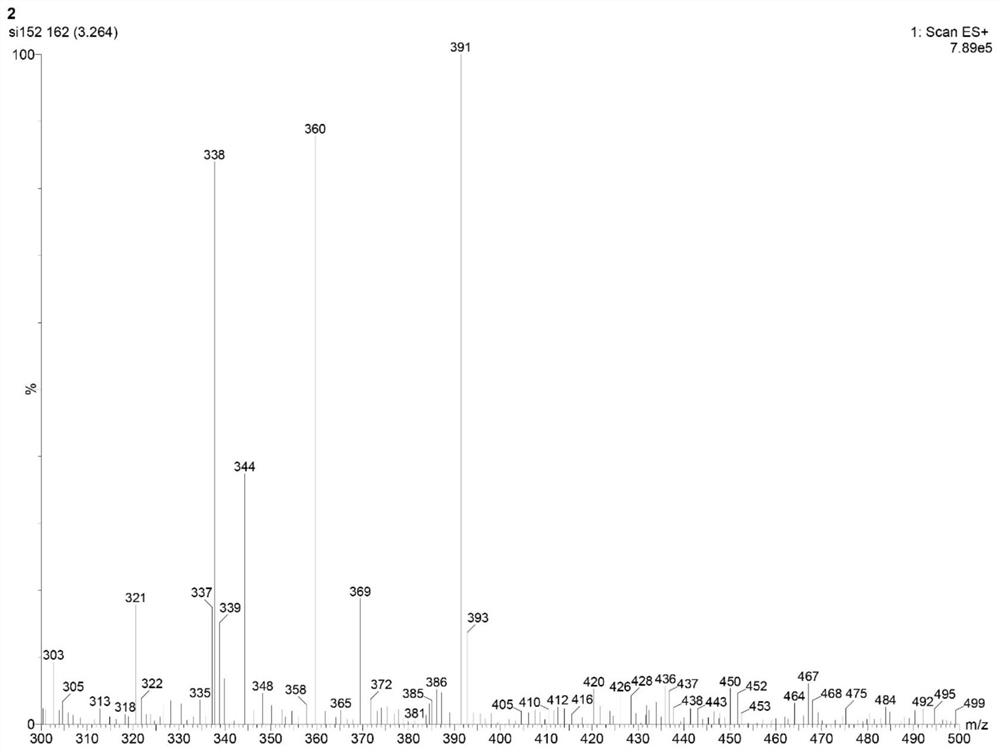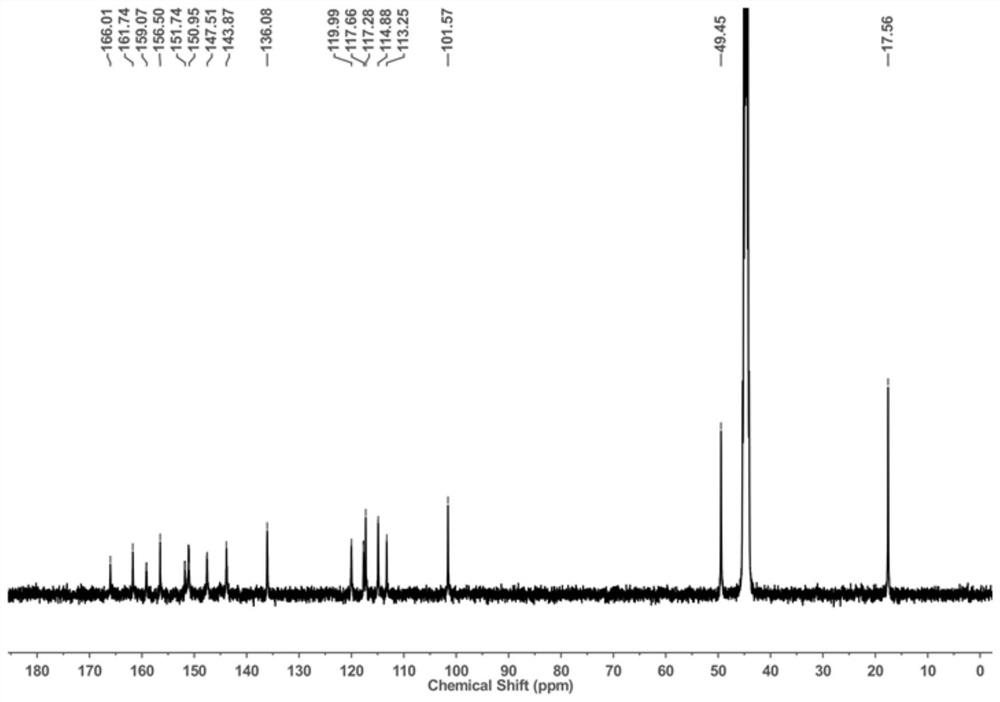Small-molecule fluorescent probe, preparation method and application thereof
A fluorescent probe and small molecule technology, applied in the field of small molecule fluorescent probe and preparation, can solve the problems of insufficient application potential exploration, low water solubility, and high detection limit, and achieve good application prospects, simple synthesis methods, and convenient operation. Effect
- Summary
- Abstract
- Description
- Claims
- Application Information
AI Technical Summary
Problems solved by technology
Method used
Image
Examples
Embodiment 1
[0032] Example 1: Synthesis of Small Molecule Fluorescent Probes
[0033] The chemical formula of the synthetic small molecule fluorescent probe is as follows figure 1 Shown, wherein EtOH is ethanol, RT is room temperature.
[0034] The specific synthesis process is as follows: 7-(diethylamino)-2-oxo-2H-methylene-3-carbaldehyde (150 mg, 0.5 mmol) was dissolved in 15 mL ethanol solution, and furan was added at room temperature -2-Carbohydrazide (120mg, 0.5 mmol) was stirred, stirred at room temperature and reacted for 8h, and an orange solid was obtained from the reaction, which was washed and dried with ethanol; the above orange solid powder was dissolved in ethanol, then heated and stirred and filtered, and the filtrate was slowly volatilized for several days to obtain pure target product. Such as figure 2 , 3 As shown, the product can be determined to be the target small molecule fluorescent probe by means of mass spectrometry, NMR and spectroscopy.
Embodiment 2
[0035] Example 2: Ultraviolet and fluorescence spectra of small molecule fluorescent probes in response to hypochlorous acid
[0036] Prepare 0.5 mL small molecule fluorescent probe (10.0×10 -6 mol / L) of H 2 O (with 1% EtOH) solution. 0-50 µM hypochlorous acid solution was added dropwise to the probe solution, e.g. Figure 4 As shown in (A), after adding hypochlorous acid into the probe solution, the absorption band at 450 nm gradually decreases, and there is a new absorption peak at 200 nm to 300 nm, and the maximum absorption peak appears at 260 nm, Its absorbance intensity increases gradually with ion concentration.
[0037] In the fluorescence titration experiment, prepare 3 mL of small molecule probe (10.0×10 -6 mol / L) of H 2 O (containing 1% ethanol) solution. 0-50 µM hypochlorous acid solution was added dropwise to the probe solution, and the fluorescence value of the probe from 420 nm to 660 nm was measured with 365 nm as the excitation wavelength. The experime...
Embodiment 3
[0038] Example 3: Verification of the selectivity of small molecule fluorescent probes to hypochlorous acid
[0039] Prepare 5 mL molecular probe (10.0×10 -6 mol / L) of H 2O (containing 1% ethanol) solution. Various interference medium solutions were prepared by dissolving the corresponding salts in deionized water (O 2 - , Cl - , NO 2 - , AcO - , •OH, 1 o 2 , SO 4 2- , CO 3 2- ,S 2 o 3 2- , Cys, H 2 o 2 and GSH, 50.0×10 -6 mol / L). Subsequently, equal equivalents of hypochlorous acid solution and these interfering media were added to the probe solution, respectively. Detection is carried out by fluorescence spectrum, and the ratio of fluorescence emission wavelength (F 430 / F 518 )comparing. The results show( Figure 5 A), these interfering media have no obvious change in the fluorescence of the probe as hypochlorous acid, which belongs to the ROS series • OH, 1 o 2 , H 2 o 2 Also had a slight effect but still insignificant compared to hypochlorou...
PUM
 Login to View More
Login to View More Abstract
Description
Claims
Application Information
 Login to View More
Login to View More - R&D
- Intellectual Property
- Life Sciences
- Materials
- Tech Scout
- Unparalleled Data Quality
- Higher Quality Content
- 60% Fewer Hallucinations
Browse by: Latest US Patents, China's latest patents, Technical Efficacy Thesaurus, Application Domain, Technology Topic, Popular Technical Reports.
© 2025 PatSnap. All rights reserved.Legal|Privacy policy|Modern Slavery Act Transparency Statement|Sitemap|About US| Contact US: help@patsnap.com



